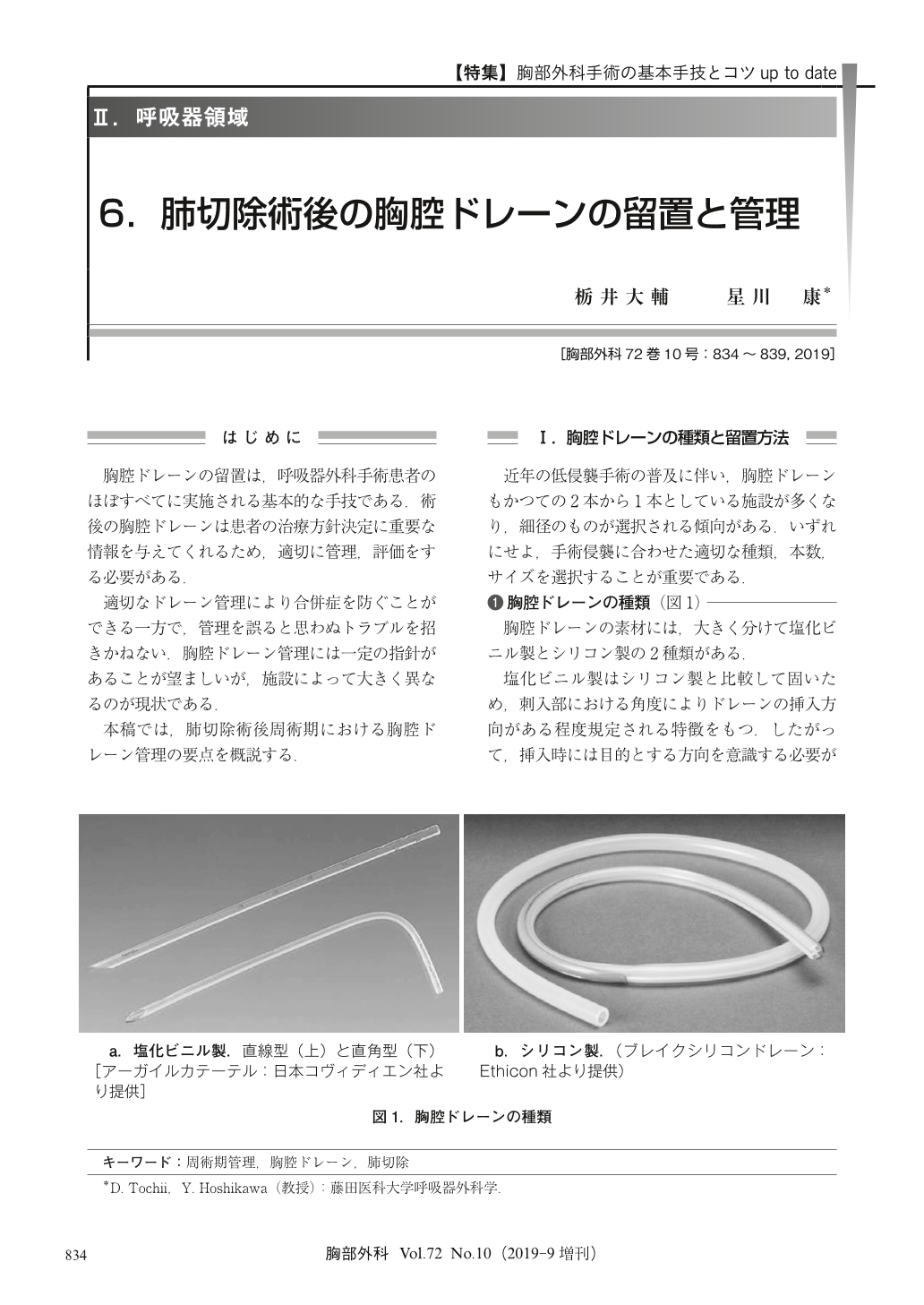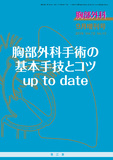Japanese
English
- 有料閲覧
- Abstract 文献概要
- 1ページ目 Look Inside
- 参考文献 Reference
胸腔ドレーンの留置は,呼吸器外科手術患者のほぼすべてに実施される基本的な手技である.術後の胸腔ドレーンは患者の治療方針決定に重要な情報を与えてくれるため,適切に管理,評価をする必要がある.
The proper management of chest tubes for patients undergoing lung resection is very important to prevent postoperative complications. Although it is desired to have evidence-based consensus for the management of chest tubes, currently the protocols vary among institutions. This article reviewed some recent literatures and our opinions regarding postoperative management of chest tubes. The use of 1 chest tube has been recently preferred compared to 2 chest tubes. However, the use of 2 chest tubes are required when postoperative air leakage, massive fluid discharge, or hemorrhage is concerned after peeling the firm and broad range of pleural adhesions. The chest tube is inserted through the skin incision through an access port and upper edge of the rib at an intercostal space from the skin incision, and then, commonly attached to the chest drainage unit employing a 3-bottle system. Although continuous suction with water sealing is usually utilized, a randomized controlled trial revealed that continuous suction was not better than water sealing without suction in terms of duration of air leakage, chest drainage, and hospital stay. Chest tubes can be safely removed with both no air leakage during coughing as well as daily drainage volume of up to 200 ml. According to a systematic review and meta-analysis, recently developed digital chest drainage system, with which the pleural pressure can be constantly maintained and air leakage can be evaluated objectively, proved to reduce the risk of prolonged air leakage and to shorten the duration of chest drainage and hospital stay after lung resection when compared with the traditional analog drainage system. Prolonged postoperative air leakage is usually treated with chemical pleurodesis using autologous blood, minocycline, or OK-432. Some studies demonstrated that pleurodesis with 50% glucose solution was a safe and effective treatment option.

© Nankodo Co., Ltd., 2019


